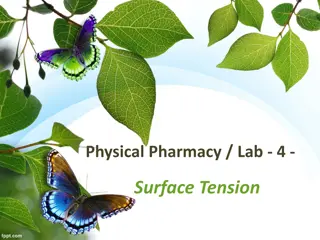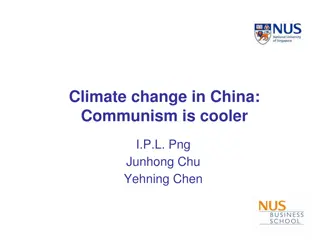Runoff in Surface Water Systems
Runoff, the flow of precipitation and other contributions in surface streams, plays a crucial role in watershed systems. It encompasses various sources such as surface runoff, interflow, and base flow. Surface runoff, which travels over the ground surface to channels, is influenced by factors like s
1 views • 27 slides
Preventing Sexual Exploitation and Abuse in Humanitarian Work
Sexual exploitation and abuse (SEA) in humanitarian settings involves acts of gross misconduct by workers, including abuse of power for sexual purposes and engaging in sexual activities with minors. Six core principles guide the prevention of SEA, emphasizing the prohibition of sexual relationships
1 views • 10 slides
Protection from Sexual Exploitation and Abuse (PSEA) in COVID-19 Response
Amid the COVID-19 crisis, the risks of Sexual Exploitation and Abuse (SEA) are heightened, impacting vulnerable populations. It is crucial for humanitarian actors to uphold existing PSEA commitments and systems. SEA violates fundamental human rights, undermines trust, and has severe consequences for
0 views • 18 slides
Ocean Currents and Effects
Ocean currents play a crucial role in the movement of water across the Earth's surface. Wind-driven surface currents, influenced by the Coriolis effect, move water horizontally and impact climate patterns worldwide. Major currents extend deep below the surface and can move rapidly, while rip current
0 views • 14 slides
Surface Tension in Physical Pharmacy Lab
Surface tension is a crucial concept in physical pharmacy lab dealing with gas-solid or gas-liquid interfaces. It refers to the force per unit length required to balance the inward pull on the surface. Interfacial tension, cohesive forces, and adhesive forces play significant roles in determining su
0 views • 16 slides
The Impact of Arctic Warming Through Air-Sea Coupling
Investigate the role of air-sea coupling in amplifying or dampening the impact of Arctic warming on northern continents using coordinated coupled model experiments. Explore the mechanisms bridging Arctic impacts in the Northern Hemisphere via North Pacific sea surface temperature changes. Focus on t
4 views • 15 slides
The Impact of Snow on Sea Ice in Earth System Models
Snow on sea ice plays a crucial role in Earth System Models, affecting sea ice growth and atmospheric temperatures. While observational studies are limited, ongoing research aims to improve modeling accuracy by incorporating snow-ice interactions. Large-scale studies highlight the importance of Arct
0 views • 13 slides
Arctic Climate Outlook: Summer 2020 & Winter 2020-2021 Highlights
In Summer 2020, Arctic experienced above-normal temperatures, wetter conditions in most areas except Siberia, and record-low sea-ice extent. Winter 2020-2021 forecasts above-normal temperatures, wetter conditions, and delayed freeze-up in certain regions.
0 views • 3 slides
Supporting Marine Environment in the Baltic Sea: HELCOM.BLUES Project Overview
The HELCOM.BLUES project focuses on biodiversity, litter, underwater noise, and regional measures for the Baltic Sea. It aims to enhance regional capacity for developing effective measures to maintain a healthy marine environment. The project involves a consortium of 14 partners and over 7 subcontra
0 views • 22 slides
Decadal Changes in Caribbean Low-Level Jet and Atmospheric Dynamics
Analysis of decadal changes between the 1990s and 2010s in the Caribbean region focusing on the low-level jet, rainfall patterns, 925 hPa geopotential, winds, and surface temperatures during dry and rainy seasons. Significant variations observed in wind strengths, pressure gradients, and surface tem
0 views • 9 slides
Weather Forecast and Safety Implications for 41st Rolex Middle Sea Race Malta 2020
Lt. Col. Alessio Canessa from Aeronautica Militare provides insights on the predictability of weather, wind forecasts, and safety impacts for the start of the 41st Rolex Middle Sea Race Malta 2020. Uncertainty of predictions and the 7-day weather forecast for sailing conditions are discussed, highli
0 views • 41 slides
Near-Surface Sea Temperature Development in NCEP GFS/CFS
This informative piece delves into the evolution of Near-Surface Sea Temperature (NSST) within the NCEP GFS/CFS, discussing its significance in Numerical Weather Prediction (NWP) systems, the utilization of sea surface temperature (SST), and the T-profile near the sea surface. It covers the role of
0 views • 28 slides
Atmosphere-Ocean Coupling in Madden-Julian Oscillation
Atmosphere-ocean coupled processes in the Madden-Julian Oscillation (MJO) play a crucial role in intraseasonal oscillations. This paper review by Shao Yun-Chuan explores how the ocean's Sea Surface Temperature (SST) influences surface fluxes, MJO convection, and energy balance dynamics. It delves in
0 views • 17 slides
Impact of Harvest and Post-Harvest Processing on Sea Cucumber Quality in Fiji Islands
Sea cucumbers, a valuable delicacy in Asian cuisine, have been harvested in Fiji for centuries due to their rich nutritional profile and health benefits. This study investigates the effects of different harvest and post-harvest processing methods on the quality of bche-de-mer, a dried form of sea cu
0 views • 17 slides
Surface Ozone Seasonal Cycle Reversal Study in Northeastern United States Lower Manhattan
Study on the reversal of the surface ozone seasonal cycle over Northeastern United States Lower Manhattan, analyzing the impact of NOx and VOC emissions on Surface O3 levels. Research shows a 26% decrease in regional NOx emissions leading to changes in the seasonal cycle of surface ozone concentrati
0 views • 24 slides
Baltic Sea North Sea MSDI Working Group Report
The Baltic Sea North Sea MSDI Working Group report presents the group's history, current dormant state, and plans for the future. Following low activity in recent years, discussions among members concluded that the group may no longer add value to international work on MSDI. The group is set to rema
0 views • 6 slides
Impacts of Climate Change on the Caspian Sea Basin
The Caspian Sea Basin is facing numerous consequences of climate change, including temperature and precipitation variations, sea level fluctuations, regional land degradation, changes in sea ice extent, and increased vulnerability to flooding. Various countries in the region are experiencing differe
0 views • 12 slides
Deep Blue Sea Science Olympiad 2014 - Marine Life Exploration
Explore the fascinating marine world through images from the Deep Blue Sea Science Olympiad 2014. Identify sea turtles, creatures, fish, and more. Test your knowledge with fun quiz questions about marine life. Learn about tunicates, manatees, leatherback sea turtles, and their diets in this engaging
0 views • 31 slides
Advancing Electric Commercial Vehicles: SEA Electric's Innovation Journey
Explore the pioneering work of SEA Electric, a Victorian automotive technology company leading the charge in developing efficient 100% electric vehicle drivetrains for commercial use. With their SEA-DriveTM technology and exclusive models, SEA Electric is spearheading the transition towards sustaina
0 views • 10 slides
ICES Advice for 2015 Sea Bass Stock Structure Uncertain
Sea bass stock structure remains uncertain in IVbc, VIIa, and VIId-h with total landings advised to be below 1,155 t. The stock faces challenges such as slow growth, late maturation, and vulnerable spawning aggregations. Urgent management action is needed to reduce fishing mortality and prevent furt
0 views • 10 slides
Evaluating the Impact of Communism on Climate Change in China
This study analyzes the effects of political ideology on climate change in China, specifically focusing on the difference in extreme temperatures from 1954 to 2010. Results show a significant decrease in extreme temperatures in earlier years followed by an increase from 2000 onwards, particularly du
0 views • 73 slides
Surface Tension in Physical Pharmacy Lab
Surface tension is a critical aspect in physical pharmacy lab experiments, involving the study of forces at gas-solid or gas-liquid interfaces. It is the force per unit length required to counterbalance the net inward pull on a surface. The concept extends to interfacial tension, cohesive and adhesi
0 views • 21 slides
Surface Tension: Properties, Measurement Methods, and Calculations
Surface tension is the pressure exerted by a liquid on its surface due to cohesive forces among molecules. The measurement methods include the liquid rise in a capillary tube technique, drop weight method, and bubble pressure method. The surface tension coefficient can be calculated using the equati
0 views • 12 slides
EUREC4A UK CMO Forecasting Initiative: Weather Forecast Details
Detailed weather forecast information for the Caribbean region provided by the EUREC4A UK CMO Forecasting Initiative. The forecast covers various parameters including surface analysis, synoptic charts, moisture content, wind speeds at different levels, sea conditions, and more. Updates on winds, hum
0 views • 10 slides
Relationship Between Heat and Crime: A Data Analysis Study
This study investigates the relationship between elevated temperatures and violent crime rates in Fulton County, Atlanta, Georgia, from 2000 to 2013. Using data on monthly crime totals and average maximum temperatures, a least-squares linear regression analysis reveals significant correlations, part
0 views • 13 slides
Urgency of Environmental Advocacy and Climate Change Action
Environmental advocacy is crucial due to the pressing issue of climate change, as evidenced by rising global temperatures, sea levels, and extreme weather events. Urgent action is needed to address warming oceans, retreating glaciers, and increasing record high temperatures. Policy solutions focus o
0 views • 17 slides
Impact of Rising Sea Surface Temperatures on Hurricane Behavior
Investigating the relationship between sea surface temperatures and hurricane behavior, focusing on the potential increase in out-of-season hurricanes with rising average SST. Data analysis from 1970-2020 reveals patterns in hurricane formation dates and categories, supporting the hypothesis of more
0 views • 13 slides
The Wonders of the Baltic Sea
The Baltic Sea, located in Northern Europe, is a unique body of water known for its brackish nature and rich biodiversity. Stretching across various regions and basins, the sea is home to numerous islands and archipelagos, each adding to its charm and beauty. Discover the geophysical data, coastal t
0 views • 11 slides
Exploring the Sea Turtle Project Introduction Studios
Dive into the world of sea turtles with the Sea Turtle Project Introduction Studios. Discover the importance of protecting these endangered creatures, learn about the risks they face from plastic pollution, and explore ways to help safeguard their habitats. Stunning visuals and informative slides pr
0 views • 6 slides
Reconstructing Sea Ice Extent from Early Nimbus Satellites Research
Researchers at the National Snow and Ice Data Center, University of Colorado, are working on reconstructing sea ice extent using data from the 1960s Nimbus series satellites. By digitizing and processing old satellite data, they aim to extend sea ice records back to 1964, potentially adding 16 more
0 views • 16 slides
History of Sea Level Variability Over the Past Million Years
Exploration of sea level changes over the last 1,000,000 years through research and data, including the post-glacial maximum sea level, exposed continental shelf during the last ice age, and rising sea level as ice caps melted. The analyses provide insights into the dynamics of sea level fluctuation
0 views • 4 slides
Overview of Sea Ice Characterization and Validation Process
Sea ice characterization and validation process for cryosphere products involve three stages of validation maturity. It includes evaluating algorithm performance, analyzing required inputs, conducting quality flag analysis, and documenting error budget. The team members consist of experts from vario
0 views • 38 slides
Exploring the Vast Universe: Stars, Galaxies, and Beyond
Delve into the immense scale of the universe as we uncover the characteristics of stars, their compositions, temperatures, and distances from Earth. Learn how spectroscopy reveals the elements within stars, discover mnemonic devices for remembering star temperatures, and explore methods such as para
0 views • 10 slides
Satellite Applications in Estimating Earth's Surface Energy Budget
Satellites play a crucial role in estimating the Surface Energy Budget (SEB) by providing data on various components such as Surface Radiation Budget and Surface Turbulent Fluxes. The SEB includes factors like net radiation flux, sensible and latent heat fluxes, and subsurface heat transfer. Satelli
0 views • 38 slides
The Hazards of Extreme Temperatures in the Workplace
Extreme temperatures, whether hot or cold, pose significant risks to worker health and safety. This material, developed by OSHA, highlights the dangers of heat and cold exposure, including heat stroke, hypothermia, and other related illnesses. The case study mentioned underscores the importance of p
0 views • 50 slides
Geometry Concepts for Surface Area Calculations
Explore various geometric shapes such as pyramids and cones to calculate surface area. Learn the differences between prisms and pyramids, understand the importance of altitude and slant height in pyramids, and differentiate between lateral and surface areas. Practice finding lateral and surface area
0 views • 16 slides
Addressing Sea Level Changes in the Maldives
The Maldives, a group of coral islands in the Indian Ocean, faces imminent threats from rising sea levels. With 80% of its islands less than 1m above sea level, 360,000 citizens might need to evacuate in the next 100 years. The impacts include forced migration, economic decline, and environmental de
0 views • 5 slides
Impact of Climate Change on the Port of Cape Town
The Port of Cape Town, a critical infrastructure asset, faces challenges due to climate change. Rising temperatures have led to droughts, affecting cargo handling and operations. Additionally, rising sea levels threaten port infrastructure and equipment. Increased temperatures pose risks to employee
0 views • 18 slides
Facing Higher Sea Levels and Coastal Flooding in New York City: Impacts and Resilience Strategies
The research highlights the increasing threat of higher sea levels and coastal flooding in New York City, exemplified by Hurricane Sandy. It discusses observed sea level rise trends, top coastal storm floods, and climate change projections. Initiatives like the New York City Panel on Climate Change
0 views • 22 slides
Surface Temperatures and Albedo in Planetary Systems
Surface temperatures and albedo play significant roles in understanding planetary characteristics. Albedo, the fraction of sunlight reflected from a planet's surface, varies among planets. By considering factors like albedo, distance from the Sun, and energy flux, we can estimate surface temperature
0 views • 10 slides







































